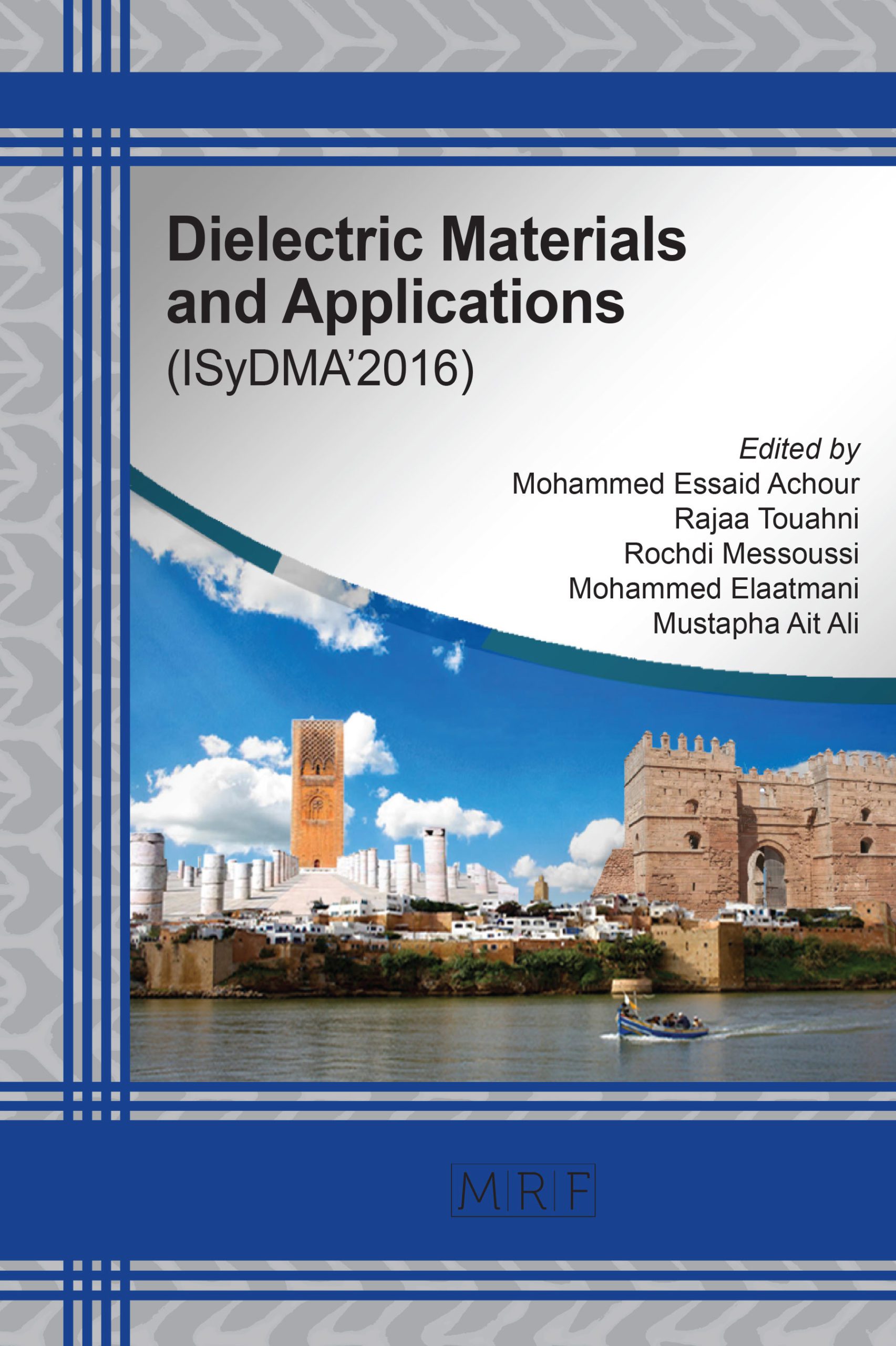H. AIT LAASRI, A. TACHAFINE, D. FASQUELLE, N. TENTILLIER, J.-C. CARRU, M. ELAATMANI, L.C. COSTA, A. OUTZOURHIT
Abstract. Lead-free ferroelectric materials derived from BaTiO3, SrTiO3 and CaZrO3 were synthetized by the solid state reaction. Effects of ionic substitutions in A cationic sites between Ba, Ca and Sr and in B cationic sites between Ti and Zr on structural and dielectric properties were investigated. Structure and morphology of all the ceramics were determined by X-ray diffraction and SEM. Dielectric measurements were investigated in the temperature range from 80 K to 800 K and in frequency from 100 Hz to 1.8 GHz. Dielectric permittivity shows a good stability over all the frequency range for BTO, BCT, BZT, SCT and CZT ceramics. Barium substitution by Ca and Zr decreases the dielectric permittivity and moreover reduces the loss tangent over 1MHz by a factor of 10 compared to BTO
Keywords
Materials, BaTiO3, SrTiO3, Permittivity, Capacitor, Ferroelectric, Relaxor
Published online 12/10/2016, 4 pages
Copyright © 2016 by the author(s)
Published under license by Materials Research Forum LLC., Millersville PA, USA
Citation: H. AIT LAASRI, A. TACHAFINE, D. FASQUELLE, N. TENTILLIER, J.-C. CARRU, M. ELAATMANI, L.C. COSTA, A. OUTZOURHIT, ‘Dielectric properties in large temperature and frequency ranges of ferroelectric ceramics’, Materials Research Proceedings, Vol. 1, pp 135-138, 2016
DOI: http://dx.doi.org/10.21741/9781945291197-34
The article was published as article 34 of the book Dielectric Materials and Applications
References
[1] 1. A. J. Moulson and J. M. Herbert, Electroceramics, Chapman and Hall Press, NewYork (1996).
[2] J.-C. Carru and al., “Down scaling at submicron scale of the gap width of interdigitated Ba0.5Sr0.5TiO3 capacitors”, IEEE Transactions on Ultrasonics, Ferroelectrics and Frequency Control, vol. 62, n°2, pp. 247-254 (february 2015).
[3] A. Tachafine, J.-C. Carru and al., “Relaxor behavior in (Ba1-1.5XBiX)(ZrYTi1-Y)O3 ceramics”, Ceramics International, vol. 37, pp. 2069-2074 (2011). http://dx.doi.org/10.1016/j.ceramint.2011.04.124
[4] A. Aoujgal, H. Ahamdane, M. P. F. Graça, L. P. Costa, A. Tachafine, J.-C. Carru, and A. Outzourhit, “Structural and relaxor behavior of Ba[ZrxTi1-x-y](Zn1/3Nb2/3)yO3 ceramics obtained by solid state reaction”, Solid State Communications, vol. 150, pp. 1245-1248 (2010). http://dx.doi.org/10.1016/j.ssc.2010.03.035
[5] S. Mahajan, O.P. Thakur, C. Prakash and K. Sreenivas, “Effect of Zr on dielectric, ferroelectric and impedance properties of BaTiO3 ceramic”, Bull. Mater. Sci., vol. 34, n°7, pp. 1483-1489 (december 2011). http://dx.doi.org/10.1007/s12034-011-0347-2
[6] A Tachafine L. C. Costa, J.-C. Carru and al.,”Classical and Relaxor Ferroelectric Behavior of Titanate of Barium and Zirconium Ceramic”, Spectroscopy Letters, vol. 47, pp. 404-410 (2014). http://dx.doi.org/10.1080/00387010.2013.872664































